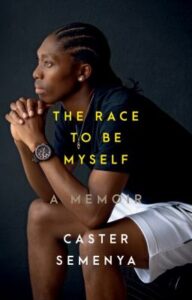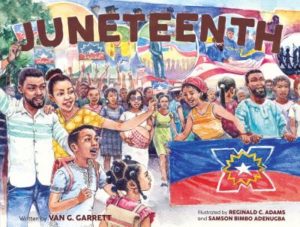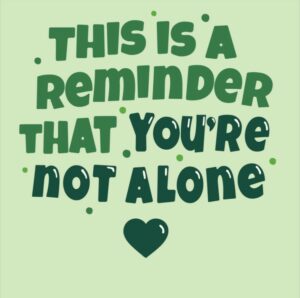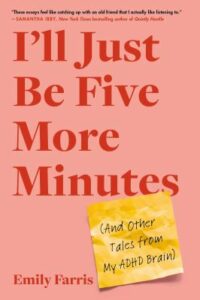 “Let the Games Begin” is an aptly named book in Smiley Library’s new fiction collection, given that the exciting opening ceremony of the 2024 Summer Olympic Games in Paris takes place today — magnifique! You may want to enhance your Olympic games viewing experience by sprinting into this debut rom-com novel by Rufaro Faith Mazarura. Taking place at summer Games in Greece, it sparkles with romantic glances, accomplished Olympians, underdog heroics, and well, the brilliant sand, sea, and skies of glorious Greece!
“Let the Games Begin” is an aptly named book in Smiley Library’s new fiction collection, given that the exciting opening ceremony of the 2024 Summer Olympic Games in Paris takes place today — magnifique! You may want to enhance your Olympic games viewing experience by sprinting into this debut rom-com novel by Rufaro Faith Mazarura. Taking place at summer Games in Greece, it sparkles with romantic glances, accomplished Olympians, underdog heroics, and well, the brilliant sand, sea, and skies of glorious Greece!
 More books on the world of sporting out this year in non-fiction include “The Other Olympians: Fascism, Queerness, and the Making of Modern Sports.” Named a Most Anticipated Book by Esquire, Town & Country, and Electric Literature, author Michael Waters uncovers, for the first time, the separate stories of Zdeněk Koubek and Mark Weston, both high-achieving athletes in the 1930s who were assigned female at birth and began to live as males as adults. The news of their transitions was carried by global media outlets and they became celebrities only to be quickly forgotten. Waters’ research discovers other pioneering trans and intersex athletes from their era, as well as what he has identified as Nazi influence on and misdeeds by the International Olympic Committee that have had lasting consequences for the trans community.
More books on the world of sporting out this year in non-fiction include “The Other Olympians: Fascism, Queerness, and the Making of Modern Sports.” Named a Most Anticipated Book by Esquire, Town & Country, and Electric Literature, author Michael Waters uncovers, for the first time, the separate stories of Zdeněk Koubek and Mark Weston, both high-achieving athletes in the 1930s who were assigned female at birth and began to live as males as adults. The news of their transitions was carried by global media outlets and they became celebrities only to be quickly forgotten. Waters’ research discovers other pioneering trans and intersex athletes from their era, as well as what he has identified as Nazi influence on and misdeeds by the International Olympic Committee that have had lasting consequences for the trans community.
 Learn more about the Games and two modern Olympians in the memoirs of Caster Semenya, a South African middle-distance runner and winner of two Olympic gold medals, and Kara Goucher, two-time Olympian, and winner of the silver medal at the 2007 World Championships in the 10,000 meters. Each has a unique story of challenges that they finally felt ready to share.
Learn more about the Games and two modern Olympians in the memoirs of Caster Semenya, a South African middle-distance runner and winner of two Olympic gold medals, and Kara Goucher, two-time Olympian, and winner of the silver medal at the 2007 World Championships in the 10,000 meters. Each has a unique story of challenges that they finally felt ready to share.
 Semenya in “The Race to Be Myself” recounts the progression of her talent and success which has been overshadowed by criticism and speculation about her body, and how gender plays out in sports, our expectations of female athletes, and the right to compete as you are. Goucher’s memoir, “The Longest Race: Inside the Secret World of Abuse, Doping, and Deception on Nike’s Elite Running Team,” was a New York Times bestseller; in it she shares how she was lulled into the abusive doping world by her coach, distance running legend Alberto Salazar, and how she became a crusader for female athletes and a key witness helping to get Salazar banned from coaching at the Olympic level.
Semenya in “The Race to Be Myself” recounts the progression of her talent and success which has been overshadowed by criticism and speculation about her body, and how gender plays out in sports, our expectations of female athletes, and the right to compete as you are. Goucher’s memoir, “The Longest Race: Inside the Secret World of Abuse, Doping, and Deception on Nike’s Elite Running Team,” was a New York Times bestseller; in it she shares how she was lulled into the abusive doping world by her coach, distance running legend Alberto Salazar, and how she became a crusader for female athletes and a key witness helping to get Salazar banned from coaching at the Olympic level.
Reaching the Olympic level of competition is not for the faint of heart — even for our rom-com characters, and that is probably why we enjoy watching Olympians compete, because we know their top-level dedication is beyond what most of us could do, so we celebrate their hard-won victories and feel for them in their devastating defeats. Cheers to each of those participating in the 2024 Games!
Look for an extensive list of the Library’s Olympic-themed books and movie DVDs posted here on Smiley Blog earlier this month.

 The month of May, a time when we strive to bring awareness to our mental health, furthers the theme of the connection between friendship and health. At one time or another, most of us are in need of some kind of special care with life’s challenges and illnesses. Whether we are suffering from the effects of (in no particular order) grief, a broken heart, stress, anxiety, depression, bipolar disorder, addiction, autism, ADHD, OCD, schizophrenia, etc., we need, at the very least, some kind of guidance and kindness to get us through. Though we need to be aware that professional help may be required, the concern of a friend or a friendly stranger, or just a sincere smile on a face can often make all the difference.
The month of May, a time when we strive to bring awareness to our mental health, furthers the theme of the connection between friendship and health. At one time or another, most of us are in need of some kind of special care with life’s challenges and illnesses. Whether we are suffering from the effects of (in no particular order) grief, a broken heart, stress, anxiety, depression, bipolar disorder, addiction, autism, ADHD, OCD, schizophrenia, etc., we need, at the very least, some kind of guidance and kindness to get us through. Though we need to be aware that professional help may be required, the concern of a friend or a friendly stranger, or just a sincere smile on a face can often make all the difference. Visit us, your friends at Smiley Public Library, if you need to locate resources for help, including finding some helpful books in the area of concern, even it’s just to hear another’s story. Here is a small sampling from our new book collection.
Visit us, your friends at Smiley Public Library, if you need to locate resources for help, including finding some helpful books in the area of concern, even it’s just to hear another’s story. Here is a small sampling from our new book collection. On a lighter note, another memoir, “
On a lighter note, another memoir, “ “
“ Ultimately, in whatever we’re going through, we usually have to get to know ourselves better in order to begin healing. You may remember Julia Cameron’s 1992 classic “The Artist’s Way,” designed to provide tools to access artistic creative recovery. This year Cameron has released a supplement, “
Ultimately, in whatever we’re going through, we usually have to get to know ourselves better in order to begin healing. You may remember Julia Cameron’s 1992 classic “The Artist’s Way,” designed to provide tools to access artistic creative recovery. This year Cameron has released a supplement, “
 Celebrate Earth Day in Redlands, Saturday, April 20th
Celebrate Earth Day in Redlands, Saturday, April 20th